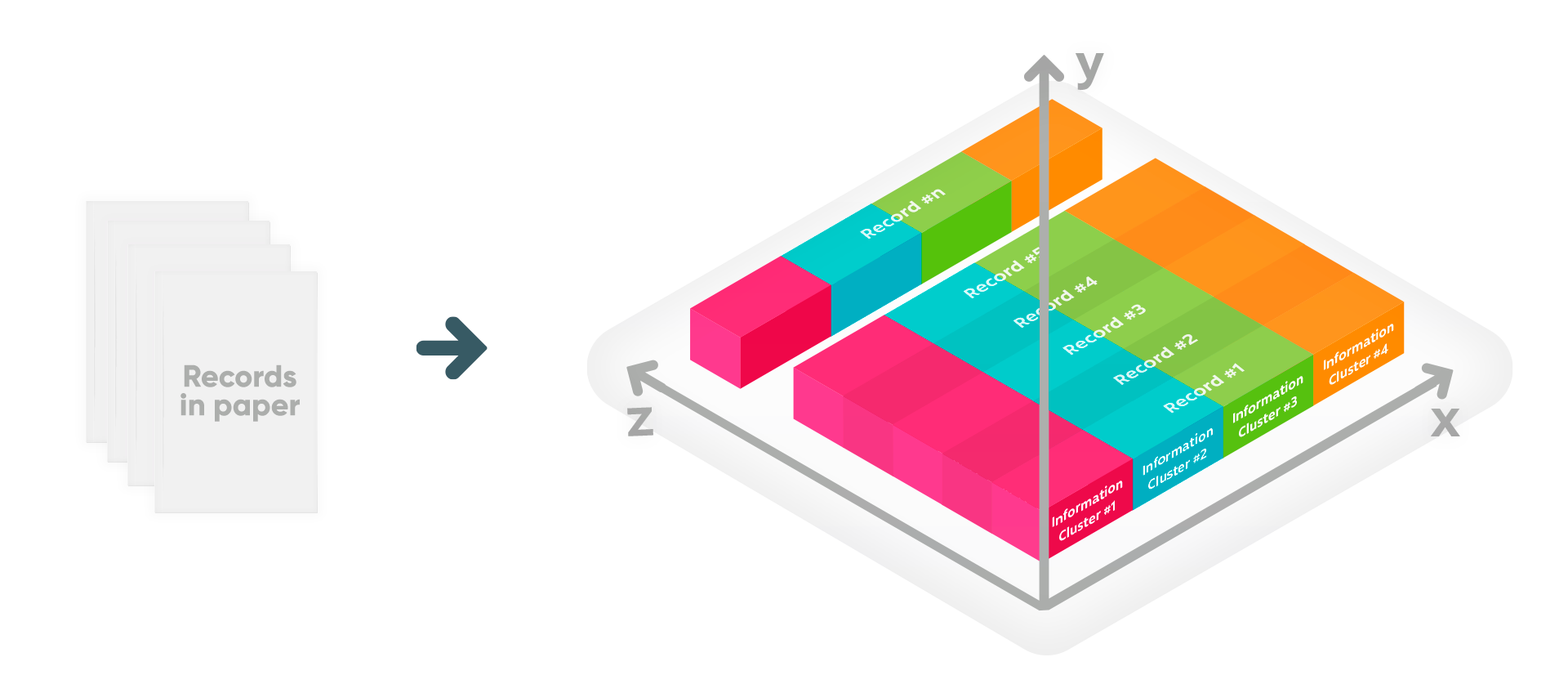Informations

In many fields of study people deal with a large volume of data, which is often analyzed based on temporal aspects. Temporal data visualization supports planning and decision-making processes as it helps understand complex processes. The use of three-dimensional space could open exciting opportunities to represent, interpret, and explore temporal data through more natural interaction in real-time. Still, most approaches based on Virtual Reality (VR) techniques to visualize temporal data are an extension of well-known methods in the two-dimensional space. In this context, Visual Attention and Machine Learning have also grown in relevance in many study areas. The former helps us to explore a complex visual scene. The latter has led to significant breakthroughs in many different areas, being extensively used in IV to assist mining data and image processing. As mentioned, the use of VR techniques is already present in temporal data visualization. However, there is a lack of initiatives that combine them with Visual Attention and Machine Learning to improve the visualization of this kind of data. This work proposes a VR approach combining with Visual Attention concepts and Rule-based Machine Learning methods, named 3D BlockARL, to support interactive visualization of temporal data. Our contribution is to learn the users’ preferences through Machine Learning methods for a Temporal Data visualization, designed with the support of Visual Attention concepts, assisting the development of more personalized displays, that can open new possibilities of representation and exploration of temporal data in the three-dimensional space. We analyze the accuracy, effectiveness, and usability perspective through controlled experiments conducted to validate the approach and compare the results with the method currently in use at a research partner. Besides good acceptance, our approach also demonstrates promising results that confirmed the potential to support visualization development based on users’ preferences learned. The approach contributes to the Computer Engineering area combining relevant areas to create a more personalized interactive visualization of temporal data based on learned preferences.
Keywords: Information Visualization; Temporal Data; Visual Attention; Ruled-based Learning Method; Virtual Reality.
Cooperation:
- Associação Brasileira de Reciclagem e Assistência em Homeopatia (ABRAH)
- Professor Romeu Carillo Jr. (in memoriam)
- Professor Maria Solange Gosik , Chief of the Department of Homeopathy at Hospital do Servidor Público Municipal (HSPM) - São Paulo/SP - Brazil, CEO at ABRAH - São Paulo/SP - Brazil.
- Silva, L. S., Nunes, F. L. S., Nakamura, R. (2019). Visualização 3D interativa de dados médicos temporais baseada em modelo de atenção visual. Comunicações Em Informática, 3(2), 9-12. https://doi.org/10.22478/ufpb.2595-0622.2019v3n2.49464.
- L. S. Silva, R. V. Aranha, M. A. d. O. Ribeiro, R. Nakamura and F. L. S. Nunes, "Exploring Visual Attention and Machine Learning in 3D Visualization of Medical Temporal Data," 2020 IEEE 33rd International Symposium on Computer-Based Medical Systems (CBMS), Rochester, MN, USA, 2020, pp. 146-151, https://doi.org/10.1109/CBMS49503.2020.00035.
- L. S. Silva, R. Nakamura and F. L. S. Nunes, "Machine Learning in Information Visualization: Using Rule-based Learning Algorithms to Personalize Interfaces," 2020 International Conference on Systems, Signals and Image Processing (IWSSIP), Niterói, Brazil, 2020, pp. 179-184, https://doi.org/10.1109/IWSSIP48289.2020.9145098.
- L. S. Silva, R. V. Aranha, M. A. d. O. Ribeiro, R. Nakamura and F. L. S. Nunes, "3D visualization of temporal data: exploring Visual Attention and Machine Learning" . To appear in SVR2020 - The Symposium on Virtual and Augmented Reality (SVR). Porto de Galinhas-PE/Brasil.




